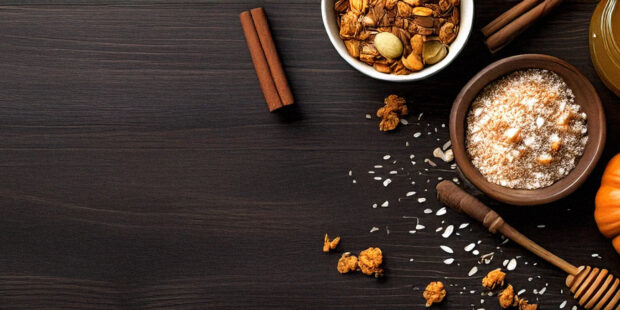Exercise Excuses: It Takes Too Much Time
- Four Ways to Start Exercising More
- Cultivating a Daily Exercise Routine
- You Can’t Out-Exercise a Bad Diet (or Bad Lifestyle Factors)
“Health experts often remark that if exercise came in pill form it would be the most sought-after drug on the market,” researchers say. “For decades, research has frequently identified exercise [benefits many conditions from] balance, bone density, strength, and endurance to lipid profiles, blood pressure, and cardiovascular health.” [1]
Despite knowing these and many health benefits of regular exercise, the Centers for Disease Control and Prevention (CDC) says that only 21.7 percent of American adults (that’s about one in five) met the Physical Activity Guidelines for both aerobic and muscle-strengthening activity. [2]
In other words, most of us don’t exercise, even though we know how good it is for us.
Among the CDC’s guidelines include 2.5 hours of moderate-intensity exercise (such as brisk walking) and strength-training activities working all major muscle groups two days weekly. You can find their alternate fitness recommendations here.
Altogether, you’re looking at about four hours total of exercise weekly, yet many people complain they don’t have enough time. Others find gyms or fitness classes intimidating.
Banish those excuses! You don’t have to visit a gym to for a quick, efficient workout, and you needn’t spend an hour or longer slaving away to get the numerous benefits of exercise. [3]
Four Ways to Start Exercising More
Of course, if you enjoy working out at the gym or taking fitness classes, keep at it. But if fitting exercise into your super-packed schedule feels like a challenge, these four strategies can help you find a workout routine that works for you.
You don’t have to do them all. In fact, please don’t try to undertake all at once or you might quickly get overwhelmed. Start with one and find the right one for your needs. If you’ve been sedentary for a while, start with the first strategy.
Always talk with your doctor and get a physical examination before you begin any exercise program, especially with more intense workouts.
Strategy 1: Move More, Period
If you’ve been sedentary or otherwise resisted exercise for a while, brisk walking creates an excellent segway into becoming fitter and healthier. Among its health benefits, walking can help you maintain a healthy weight, reduce your disease risk, improve your mood, and strengthen bones and muscles. [4]
Even briskly walking for 20–25 minutes a day can help you meet the CDC’s recommendations. You don’t need to do it all at once either when you fit walking into increments:
- Park your car further from the door.
- Take phone meetings while walking around your neighborhood.
- Listen to audiobooks or make a fun music mix while walking in your park.
- Instead of meeting your friend for coffee, schedule a walk date.
Experts recommend fitting in a total of 10,000 steps daily. [5] If that sounds like a lot, start lower and gradually increase your goal. You can buy a pedometer or tracking device, but you can also find numerous apps for your phone. Every little bit of movement adds up.
Strategy 2: Find A Fun Workout
Tennis, fitness classes, and hiking are among the many choices to get moving, up the intensity a little bit, and make workouts fun. Among the ways to do that include:
- Have a contest with some friends about who can clock in the most steps every week. The winner gets a free dinner.
- Take up rollerblading in the park with your significant other.
- Make an upbeat playlist that makes you look forward to moving. Research shows the right music can improve exercise endurance. [6]
- Explore a variety of fitness classes until you find a favorite instructor.
- Put on energetic music and pretend like you’re on the dance floor.
- Challenge yourself to see how many push-ups, planks, or other bodyweight exercises you can do during TV commercials.
- Set small goals and gradually increase them. That might start with, say, three push-ups twice a day. Every few days, add another push-up. You’ll be amazed at how many you can do after just a few weeks.
- Celebrate small victories rather than keeping your eye on the finish line. Enjoy the journey!
Finding fun fitness could be a breeze. Maybe you start doing yoga and bam, you’ve found your workout. But finding an exercise that helps you get all of the benefits but feels fun might require some sampling.
Give it a fair chance. With classes, individual instructors bring a different energy to the workouts. But don’t feel discouraged if a particular class or taking up a new sport doesn’t feel like the right fit. Make the process of finding your perfect workout routine fun and you’ll eventually find your match.
Strategy 3: Strength Training
As you get older, muscle mass and strength decrease. Men lose muscle mass faster than women of the same age.
Losing skeletal muscle is the biggest contributing factor to a decreased resting metabolic rate (the number of calories it requires to keep your body functioning at rest), which may lead to weight increases or obesity. [7]
Weight resistance, or lifting weights, is the best workout to help maintain muscle mass and strength while preventing loss as you age. With the right focus, you can build muscle in as little as 15 minutes, twice a week. Among the benefits of strength training include:
- Increased lean body mass
- Increased metabolic rate
- Increased bone density
- Decreased injury risk
- Building back muscle that commonly occurs with aging [8]
Some people fear they will become bulky lifting weights. If that’s your goal, fine; but weight resistance a few times a week will give you a nice toned look.
Among the factors that determine how long it takes before you see results with resistance training include gender, body size, composition, and different hormones. [9] Patience, focus, and maintaining good form are key to building and sustaining muscle.
Ideally, do 8–10 strength training exercises two or three days a week. [10] Do eight 8–12 repetitions of each two to three times. Use the heaviest weight you can lift in good form.
That can initially feel overwhelming, and strength training done incorrectly becomes an invitation for injury. If you’re a novice and wondering how to start exercising, begin slowly with 10 or 15 minutes of weight resistance twice a week. A personal trainer can help tremendously with your form to reduce injury risk while designing a customized workout routine that works with your schedule and goals.
Strategy 4: High-Intensity Interval Training (HIIT)
High-intensity interval training or HIIT (alternately called burst training) involves brief, intermittent bursts of vigorous exercise alternated with periods of rest or low-intensity recovery. [11]
Put another way, these quick workouts are meant for you to go all out for about a minute, catch your breath, and repeat for a total of 15–20 minutes. Individual HIIT programs will vary with active and rest periods as well as activity.
HIIT contrasts with steady-state or moderate-intensity exercise such as brisk walking, where you maintain a fairly even pace for longer time periods. Time efficiency is synonymous with HIIT — you can knock out a quick workout in less time and get a bigger bang for your metabolic buck than, say, a 45-minute brisk walk.
“Most exercise protocols designed to induce fat loss have focused on regular steady-state exercise such as walking and jogging at a moderate intensity,” researchers note in one HIIT study. “Disappointingly, these kinds of protocols have led to negligible weight loss.” [12]
Most HIIT research, however, has yielded impressive results. Doing it consistently can reduce your risk for obesity and other chronic diseases including type 2 diabetes. [13] [14]
One study among 33 older sedentary men found just one HIIT session every five days improved muscle power (but not balance). [15] A second study conducted a randomized controlled trial among 44 overweight and obese men and women and found that HIIT could improve muscle size and quality. [16] A systematic review and meta-analysis found HIIT could improve body composition in overweight and obese adults. Researchers praised HIIT for its time efficiency. [17]
Rowing, walking, running, stair climbing, and swimming make excellent ways to do HIIT. [18] So can sprinting or even walking. Alternately moving vigorously for up to one minute with walking or sprinting at a normal pace for twice that time. Repeat.
Cultivating a Daily Exercise Routine
Ultimately, what matters with your workout is what works for you and what you’ll actually do, not what the latest study suggests. Creating quick, efficient workouts starts by moving more and gradually finding an exercise routine that works for you.
Best of all, designing an efficient workout doesn’t require much time. If you have 12 minutes, you can do high-intensity interval training.
Our MaxT3 program provides a selection of efficient, effective workouts that get results in less time than it takes to find a gym parking lot. We believe that with the many, many benefits of exercise, lack of time shouldn’t be an excuse to not workout. You can learn more about the program here.
Making your workouts fun can make them more sustainable, but always expecting workouts to be fun sets yourself up for disappointment. Sometimes they feel like work (that’s why they’re called workouts). But regular exercise also builds self-confidence, resilience, and mental and physical strength to grow older gracefully.
You Can’t Out-Exercise a Bad Diet (or Bad Lifestyle Factors)
Exercise can provide some health benefits and maybe even a buffer against unhealthy dietary and lifestyle factors, but regular workouts aren’t a get-out-of-jail card to eat whatever you want.
In the bigger picture, eating a bad diet will catch up with you. The “abs are built in the kitchen, not the gym” cliche carries some truth. Whole, unprocessed foods provide the best way to get nutrients, and you’ll also want to consider supplementation.
At the very least, you want to take a full-spectrum multivitamin/mineral (for men and women) as well as anti-inflammatory omega-3 fatty acids.
Exercise matters, but so does eating nutrient-rich foods and lifestyle modifications like getting sufficient sleep.
“It should be of little surprise then that Americans who both lack proper sleep and fail to engage in regular exercise vastly increase their risk for chronic illness. Is it possible there is a link between these two behaviors?” researchers in one review ask. There is: They conclude that sleep and exercise “exert substantial positive effects on one another.” [19]
So too with chronic stress. Research shows exercise can reduce subjective stress. But the opposite is also true: stress impairs your inclination to be physically active. [20] Find ways to destress naturally so you can stay motivated to exercise. [21]
Ultimately, the right amount of exercise becomes one very important piece of an overall puzzle. Along with dialing in a healthy diet, optimal sleep, and stress management, developing a quick, efficient workout becomes an excellent recipe for vitality, abundant health, energy, and cultivating your very best self.
References
- https://www.ncbi.nlm.nih.gov/pmc/articles/PMC3768113/
- https://www.cdc.gov/nchs/fastats/exercise.htm
- https://maxliving.com/five-essentials/oxygen-and-exercise
- https://www.mayoclinic.org/healthy-lifestyle/fitness/in-depth/walking/art-20046261
- https://www.ncbi.nlm.nih.gov/pubmed/17716553
- https://www.ncbi.nlm.nih.gov/pmc/articles/PMC5435671/
- https://www.ncbi.nlm.nih.gov/pmc/articles/PMC4836564/
- https://www.ncbi.nlm.nih.gov/pmc/articles/PMC4836564/
- https://www.medicalnewstoday.com/articles/320769.php
- https://www.medicalnewstoday.com/articles/320769.php
- https://www.ncbi.nlm.nih.gov/pmc/articles/PMC5313002/
- https://www.ncbi.nlm.nih.gov/pmc/articles/PMC2991639/
- https://www.ncbi.nlm.nih.gov/pmc/articles/PMC5598019/
- https://www.ncbi.nlm.nih.gov/pubmed/28366674
- https://www.ncbi.nlm.nih.gov/pmc/articles/PMC5313002/
- https://www.ncbi.nlm.nih.gov/pubmed/28647284
- https://www.ncbi.nlm.nih.gov/pubmed/28401638
- https://www.ncbi.nlm.nih.gov/pmc/articles/PMC2991639/
- https://www.ncbi.nlm.nih.gov/pmc/articles/PMC5385214/
- https://www.ncbi.nlm.nih.gov/pmc/articles/PMC3894304/
- https://maxliving.com/healthy-articles/stress-relief-tips-to-age-gracefully



